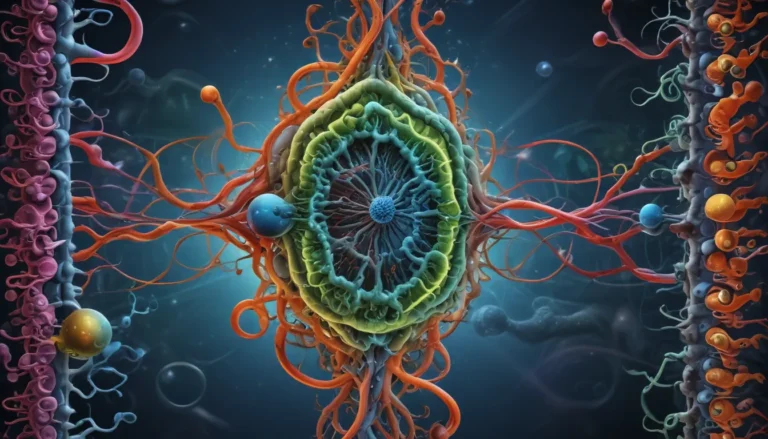A Note About Images: The images used in our articles are for illustration purposes only and may not exactly match the content. They are meant to engage readers, but the text should be relied upon for accurate information.
Zoonotic diseases, also known as zoonoses, are infectious diseases that can be transmitted between animals and humans. These captivating illnesses have intrigued scientists for centuries due to the intricate relationship between animals and humans. Zoonotic diseases play a significant role in public health, causing outbreaks and pandemics that can impact communities and even entire countries. In this article, we will delve into 15 intriguing facts about zoonotic diseases, covering everything from their origins and transmission methods to potential prevention strategies. Join us on this informative journey as we unravel the mysteries surrounding these fascinating diseases that have shaped human history.
Key Takeaways:
- Zoonotic diseases are common and can be transmitted from animals to humans. Good hygiene, vaccination, and public awareness are crucial in preventing their spread and impact on both animal and human populations.
- Animals, including pets, can carry zoonotic diseases. It’s important to practice good hygiene, vaccinate pets, and be aware of the risks when traveling to areas with a high prevalence of these diseases.
Zoonotic Diseases: More Common Than You Think
Did you know that over 60% of all known infectious diseases in humans are zoonotic? From the common flu to deadly viruses like Ebola and COVID-19, zoonoses have greatly impacted human health throughout history.
Animals as Reservoirs for Zoonotic Diseases
Wild and domestic animals serve as natural hosts for various zoonotic pathogens, which can be transmitted to humans through direct contact or consumption of contaminated products.
Poor Sanitation and Hygiene’s Role in Zoonotic Disease Spread
Inadequate waste management, unclean water sources, and a lack of proper handwashing facilities can increase the risk of zoonotic disease transmission.
The Emergence of Zoonotic Diseases
The majority of emerging infectious diseases are zoonotic, with outbreaks of new diseases like SARS, MERS, and Nipah virus being caused by pathogens jumping from animals to humans.
Pets and Zoonotic Diseases
Certain zoonotic diseases, such as rabies and toxoplasmosis, can be transmitted from pets to humans. Regular veterinary care and vaccinations are essential to minimize the risk of transmission.
Modes of Zoonotic Disease Transmission
Zoonotic diseases can be transmitted through direct contact with infected animals or their bodily fluids, as well as through indirect contact with contaminated surfaces or vectors like ticks and mosquitoes.
The Impact of Wildlife Trade
Wildlife trade can facilitate the introduction and spread of zoonotic pathogens, particularly in crowded and unregulated markets.
Economic Impacts of Zoonotic Diseases
Outbreaks of zoonotic diseases can lead to significant economic losses through increased healthcare costs, loss of productivity, and trade restrictions.
Climate Change’s Influence on Zoonotic Diseases
Changing climate patterns can affect the distribution and behavior of animal populations, altering the dynamics of zoonotic diseases and their vectors.
The One Health Approach to Zoonotic Disease Prevention
A One Health approach recognizes the interconnectedness of human, animal, and environmental health, emphasizing collaboration between different disciplines to prevent and manage zoonotic diseases.
Vaccination’s Role in Preventing Zoonotic Diseases
Vaccines are key in controlling zoonotic diseases. Vaccinating animals against diseases like rabies can help prevent transmission to humans.
Good Hygiene Practices for Zoonotic Disease Prevention
Proper handwashing, safe food handling, and good hygiene around animals can significantly reduce the risk of zoonotic disease transmission.
Travelers and Zoonotic Diseases
Travelers should be aware of zoonotic diseases prevalent in certain areas, taking necessary precautions to avoid exposure.
The Importance of Surveillance and Early Detection
Rapid identification of zoonotic disease outbreaks allows for prompt response measures, including quarantine, treatment, and prevention strategies.
Education and Public Awareness for Zoonotic Disease Prevention
Informing the public about risks associated with zoonotic diseases and promoting responsible interactions with animals can help prevent transmission and spread.
These 15 intriguing facts about zoonotic diseases highlight their complexity and the importance of global efforts in understanding, preventing, and controlling them. Through a One Health approach, effective prevention measures, and public awareness, the impact of zoonotic diseases on animal and human populations can be mitigated.
Conclusion
Zoonotic diseases form a significant aspect of the biological world, showcasing the intricate relationship between humans, animals, and the environment. Understanding their transmission, preventive measures, and early detection is crucial for minimizing their impact and preventing future outbreaks. By raising awareness, promoting responsible pet ownership, practicing good hygiene, and supporting wildlife conservation efforts, we can all contribute to reducing the risk of zoonotic diseases and strive for a healthier coexistence with the animal kingdom.
FAQs
-
What are zoonotic diseases?
Zoonotic diseases are illnesses that can be transmitted between animals and humans, caused by pathogens like viruses, bacteria, parasites, and fungi. -
How do zoonotic diseases spread?
Zoonotic diseases can spread through direct contact with infected animals, consumption of contaminated food or water, and exposure to vectors like mosquitoes, fleas, or ticks. -
What are some common examples of zoonotic diseases?
Common examples include rabies, Lyme disease, salmonellosis, avian influenza, and Ebola. -
How can we prevent zoonotic diseases?
Preventive measures include practicing good hygiene, vaccinating pets and livestock, avoiding contact with wild animals, and cooking food thoroughly. -
Are all zoonotic diseases dangerous?
While many zoonotic diseases can cause mild to severe illness, not all are equally dangerous. Some may only cause mild symptoms, while others can be life-threatening. -
Can zoonotic diseases be treated?
Treatment options vary depending on the disease and severity, with many treatable using medications, supportive care, and preventive measures. -
Why is wildlife conservation important in preventing zoonotic diseases?
Wildlife conservation helps maintain a balanced ecosystem, reducing animal-human interactions that can lead to disease transmission. -
Can zoonotic diseases be eradicated?
Eradicating zoonotic diseases completely is challenging due to their complexity, but through surveillance, vaccination, and public health interventions, their burden can be reduced. -
Is research ongoing on zoonotic diseases?
Ongoing research aims to understand disease transmission, develop diagnostics, and improve treatment options for zoonotic diseases. -
Are zoonotic diseases a concern worldwide?
Zoonotic diseases can occur globally, with varying risks based on factors like population density and climate, highlighting the importance of vigilance and preventive measures.
Zoonotic diseases are a significant threat to human health, but with knowledge of their origins, transmission, and prevention, we can protect ourselves. Understanding the interconnections between animal and human health is crucial for a safer future. For those interested in further exploring the One Health concept, our article “14 Extraordinary Facts About One Health” provides valuable insights into this holistic approach.
Was this page helpful?
Our commitment to delivering trustworthy and engaging content drives our dedication to factual accuracy. Each submission is reviewed by our editors to ensure credibility and authenticity in providing diverse insights and information. Explore and learn with confidence in our commitment to quality and authenticity as you uncover fascinating facts with us.






